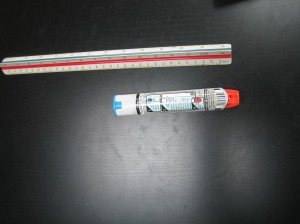If the immune system of an individual reacts abnormally to a common substance in the environment, an allergic response occurs. Generally, the substance that triggers the response is called an allergen which causes an inflammatory response in the body that can range from mild to life-threatening. Globally, individuals who are suffering from allergies continue to increase.
Based on studies, allergies are now considered as a healthcare problem. The factors that increased allergies all over the world include genetic components, pollution and even hygiene. Allergic reactions can be caused by various allergens but are usually categorized in three – contact allergies, ingested allergies and inhaled allergies. As part of any first aid course, learning about allergies and how to deal with them is important.
Ingested
Food allergy or food hypersensitivity is basically a type of food intolerance where individuals have an abnormal reaction to certain foods. The food allergies are most often due to nuts, cow’s milk, fruit and eggs.
The symptoms of food allergies can be mild such as the case with hives which manifest after eating certain foods. Majority of individuals with allergies have high levels of immunoglobulin IgE in their bloodstream. The IgE binds to the allergen and adheres to the mast cells in the skin. These mast cells release histamine which triggers the release of fluid that causes the itchy, red and inflamed skin (hives). Severe symptoms of ingested allergies include vomiting, abdominal cramps and diarrhea accompanied with rash, swelling of eyes or lips. In rare cases, it can lead to anaphylactic shock that is an abrupt and extreme allergic reaction that can lead to death.

Contact allergies
This type of allergy occurs once an allergen touches the skin of an individual. The symptoms usually occur at the area of contact. Common irritants include detergents, soaps, hair dyes, waxes, jewelry, solvents and polishes. The natural allergens include poison ivy, poison oak and ragweed. Even though annoying, a contact allergy is not dangerous.
Symptoms of contact allergy
- Itching
- Redness
- Scaling or blistering
- Swelling
The best way to handle contact allergy is to determine and avoid the irritant. Treatments can include ointments or creams in order to provide relief to the symptoms. Use antihistamines to prevent an allergic reaction. In serious cases, an anti-inflammatory medication such as prednisone can be given.
[youtube url=”http://www.youtube.com/watch?v=sM_ON4CHYW4″]Inhaled
This type of allergy is the most common particularly hay fever which is hypersensitivity to pollen. Individuals allergic to pollen suffer from runny noses, sneezing and watery eyes. Aside from pollen, allergies occur due to other airborne allergens such as mold, fungi, dust mites and pet dander. In one study, exposure to certain fungi will make children more prone to developing other types of allergies including asthma.

